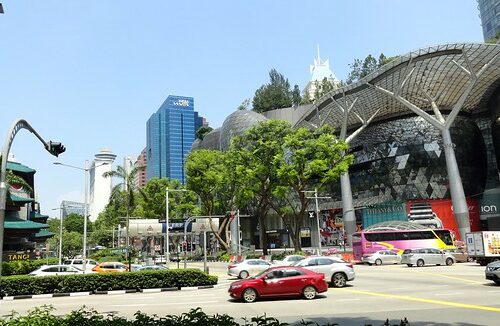- Home
- Our convictions
- Conviction #8
Conviction #8
Conviction #8
Shifting to responsible mobility calls for far-reaching policy action
Mobility services that are cleaner for the environment and better for health already exist, or are on the verge of coming to market. More often than not they are in the pre-industrial phase: they haven’t yet reached optimum production levels to make them attractive economic alternatives. This is the case, for instance, for electric and hydrogen cars.
Developing sustainable mobility also means introducing a complete system in terms of infrastructure and legislation: without electric charging points, hydrogen stations, bike paths, dedicated lanes for rapid buses, incentives to shared autonomous vehicles… there can be no development of more responsible modes of transport by road or rail, on water or in the air.
Just as renewable energies have finally become competitive, more responsible mobility services could end up invading the market over time. But given the climate emergency, we don’t have time to wait for these solutions to gain a foothold themselves! They need to be encouraged by the public authorities.
Indeed, innovation in transport represents a major field of work for States and local authorities. Facilitating trials and testing is a key factor for bringing new solutions to market quicker. The European Union (EU), and France in particular, is currently leading mobility industries. This competitive edge could be lost if fails to further demonstrate its ability to facilitate and encourage innovation.
Incentives are key to facilitating the ecological transition, as well as market cues for integrating environmental impacts into current offerings. To speed up this transition, public authorities must channel significant financial resources into new mobility until it achieves economic equilibrium and becomes competitive by itself.
Thus, sustainable and inclusive mobility will only happen if public authorities takes control of every sphere of mobility. This will involve transport organising authorities having control over a territory that is homogeneous (a metropolis, for instance, not each of its component towns and cities) and all modes of transport, individual and collective, in order to find optimal solutions: school transport, freight transport, emergency vehicles, new mobility, etc. Above all, this calls for adopting forward-thinking public policy and regulations that both promote and encourage the large-scale deployment of responsible and accessible mobility solutions for all.
KEY FIGURES
0
cars emitting greenhouse gas (GHG) emissions to be sold from 2030 = the challenge set by the City of Amsterdam.

800,000
hydrogen fuel cell vehicles in Japan’s sights for 2030.

9
bike path lines will link up the major hubs in Île-de-France (Paris and its region) in the future Express Regional Cycling Network (Réseau Express Régional Vélo).

EXPERT EYE
Joëlle Touré
ILLUSTRATIONS

Singapore anticipated the arrival of autonomous cars
The Ministry of Transport launched its Committee on Autonomous Road Transport for Singapore (CARTS) in 2014 in order to ‘harness autonomous vehicle technology for our land transport system […] and make Singapore an even more sustainable and liveable city’.

Riyadh Development Authority: including transport in urban development plans
To address the congestion issue in the Saudi capital, where the car is king, government has mandated Riyadh Development Authority to find sustainable solutions to be integrated into the city’s overall development plans.

In Rotterdam: make money by dodging traffic jams!
To improve traffic flow, Rotterdam has opted to reward rather than coerce: motorists who leave their cars at home during rush hours are remunerated. Tested since 2010 in the Dutch city, this approach has reduced traffic by 5 to 10%.
SHORT STORY

Crisis of the impossible
What if tomorrow vehicles carried at least two people?
The attention economy is set to transform the mobility business model
Innovations will soon come to disrupt mobility or immobility...
